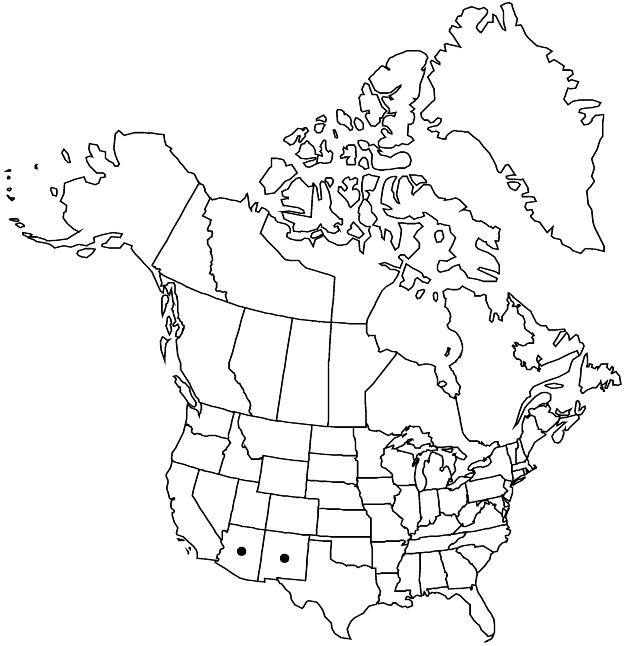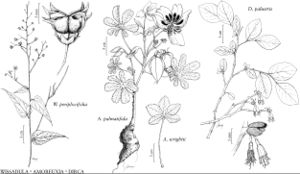Amoreuxia palmatifida
in A. P. de Candolle and A. L. P. P. de Candolle, Prodr. 2: 638. 1825.
Stems 20–60 cm, subglabrous to sparsely lanulose-puberulent (mostly on young growth), glandular. Leaves: petiole 3–10 cm, sparsely lanulose-puberulent (mostly on young growth), glandular; blade 7 (9) -lobed, 2–7.5 × 2.5–10 (–14) cm, lobes obovate, spatulate, or linear, distal 1/2–3/4 of margins serrate (crenate), apex usually truncate to slightly obtuse, sometimes emarginate, 3–5 teeth of central lobe apex usually equally distal. Peduncles 2.5–6 cm. Flowers 4–6.5 cm diam.; sepals linear to narrowly ovate, 15–20 × 3–5 mm, apex acute to acuminate; petals yellow to orange, distal petals each with 2 conspicuous red marks at base, lateral petals each with 1 red mark at base; distal set of filaments 6–12 mm with yellow (sometimes dark red-maroon) anthers, proximal set of filaments 13–19 mm with usually dark red-maroon anthers; ovary densely short-haired-lanate to tomentose or puberulent (glandular). Capsules broadly ovoid, 2–4 cm, sparsely pubescent. Seeds reniform, sparsely pilose or hispid, hairs sometimes spinelike.
Phenology: Flowering Jun–Sep; fruiting Jul–Oct.
Habitat: Gravelly, sometimes loamy, soil, dry rocky slopes and mesas, deserts, grasslands, openings in oak forests or secondary deciduous forests, disturbed sites, forest clearings and roadsides
Elevation: 0–1600 m
Distribution

Ariz., N.Mex., Mexico, Central America, South America (Colombia)
Discussion
The center of diversity for Amoreuxia palmatifida is in Sonora and Sinaloa in northwestern Mexico. Seeds range from subglabrous to densely pilose and the leaves vary from longer (to 5.5 cm) with very long and narrow linear lobes to shorter (to 3 cm) with shorter spatulate lobes (H. H. Poppendieck 1981).
All parts of Amoreuxia palmatifida, especially the root, have been used as important food sources by indigenous tribes in northern Mexico and southwestern United States (W. C. Hodgson 2001). The roots, which have been described as tasting like potatoes or parsnips, have been eaten raw, boiled, toasted, roasted, baked, or preserved (Hodgson; H. H. Poppendieck 1981). In Baja California, the roots were used in soups, and baked or dried and ground into a flour to make tortillas. One Seri tribe inhabiting Tiburon Island strung thin slices of the root as necklaces (Hodgson). The roots are used medicinally in Sinaloa to lower fevers (Poppendieck). The flowers, young tender fruits, and seeds are eaten raw, and the fruits are also boiled. The dried mature seeds have been used as a coffee substitute, and the stems and leaves as a potherb (Hodgson; D. Yetman and T. R. Van Devender 2002).
Selected References
None.
